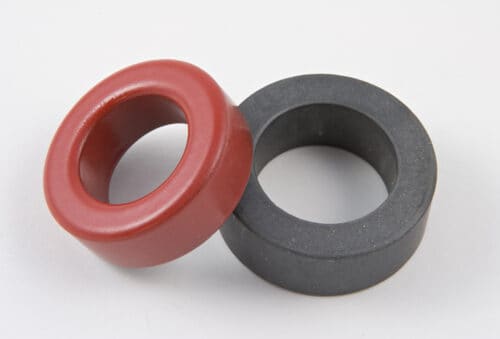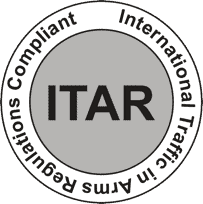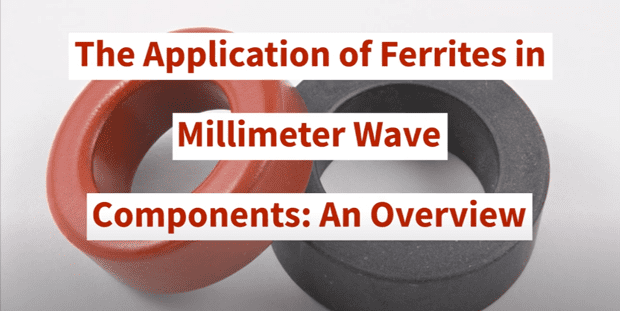Quartzite Processing, Inc. provides ferrite machining services, grinding molded ferrite materials to produce parts for various industries. Common products include millimeter wave ferrites. Learn more here about the features, benefits, and applications of ferrites in millimeter wave components.
What Are Ferrites?

Ferrite is an inorganic substance made by combining iron oxide with different metallic elements such as barium, zinc, or nickel to produce a magnetized ceramic commonly used in transformers and speakers. Because it is magnetic, ferrite can be challenging to process without specialized equipment and expertise. Quartzite Processing has the tools and experience to machine ferrite materials to create components for a range of industrial applications.
What Are the Benefits of Ferrites?
In millimeter wave applications, ferrite cores offer many advantages:
- High permeability
- Low conductivity
- Resistance to high current
- Low eddy current losses
Ferrite cores are either hard or soft. Due to their high coercivity, hard ferrite cores are typically used to make permanent hard ferrite magnets such as those found in electric motors and loudspeakers.
Soft ferrite cores are equally hard and brittle, but their low coercivity means they are not well suited as magnets. They can change magnetic direction with little hysteresis loss. Popular soft ferrite core types are nickel-zinc ferrite and manganese-zinc ferrite. Common applications of soft ferrites are high-frequency inductors, antennas, transformers, and microwave products.
Why Are Ferrites Used in Millimeter Wave Components?
Millimeter wave systems rely on ferrites for their non-reciprocal nature. In particular, hexagonal ferrites have a leaf-like structure and high anisotropy fields that are suitable for the preparation of polycrystalline grain-oriented magnetic substances. The highly anisotropic aligned polycrystalline ferrite components have built-in magnetic fields of up to 50 kilo-oersteds in their planar and uniaxial structures. Their electrical properties also make them ideal for processing parts at millimeter wave frequencies.
Applications for Millimeter Wave Components
Many applications use millimeter wave components, as highlighted below:
- Automotive: Autonomous driving requires accurately detecting passengers, pedestrians, vehicles, and other objects in real-time and at low latency. Millimeter waves are the best choice for automotive detection radar, including those that enable collision avoidance, adaptive cruise control, and automatic lane keeping.
- Body Scanners: A millimeter wave body scanner can transmit power of 1 mW and function at frequencies of 70 to 80 GHz. Commonly found in airports, these body scanners minimize harm to the human body and yield more precise results.
- HD Video: Accommodating the increasing demand for high-quality multimedia content, millimeter waves can wirelessly transmit ultra-high definition video to HDTV.
- IEEE 802.11ad WiGig Technology: WiGig (Wireless Gigabit Alliance) technology can transmit high-quality data to computers, smartphones, and tablets at a gigabit rate.
- Medical/Physical Therapy: Millimeter wave products are applied in medical and physical therapy applications, such as acute pain relief, cancer treatment, and tissue regeneration.
- Military: Millimeter waves are used in the military to identify and track targets, guide missiles, and communicate key data over long distances.
- Radar: Given their high resolution and short range, millimeter waves are used in high-frequency radar technology to detect environmental changes and identify objects accurately.
- Satellite Communication: Millimeter waves are ideal for satellite communication because they have greater frequencies than radio waves. This means they can transmit more information with low latency.
- Virtual Reality: Millimeter waves can handle a high bandwidth for virtual reality devices, producing a more immersive and realistic experience for users.
- 5G and Small Cells: Given that it needs to support large quantities of data, 5G technology will soon use millimeter waves.
Millimeter Wave Ferrites From Quartzite Processing
Ferrites are vital components across advanced applications, including millimeter wave devices. With over 65 years in the industry, Quartzite Processing has the necessary experience, resources, and machinists for ferrite machining.
Request a quote to start your solution. You can also call our office at 781.322.3611, email us at quote@quartziteprocessing.com, or find us at 6 Holyoke Street, Malden, MA 02148.


